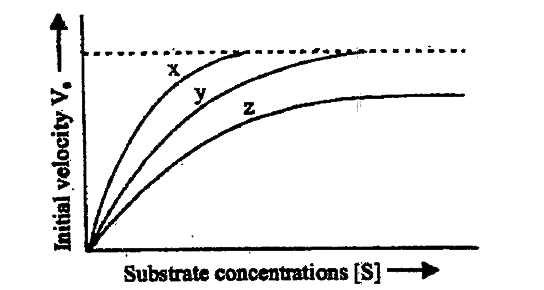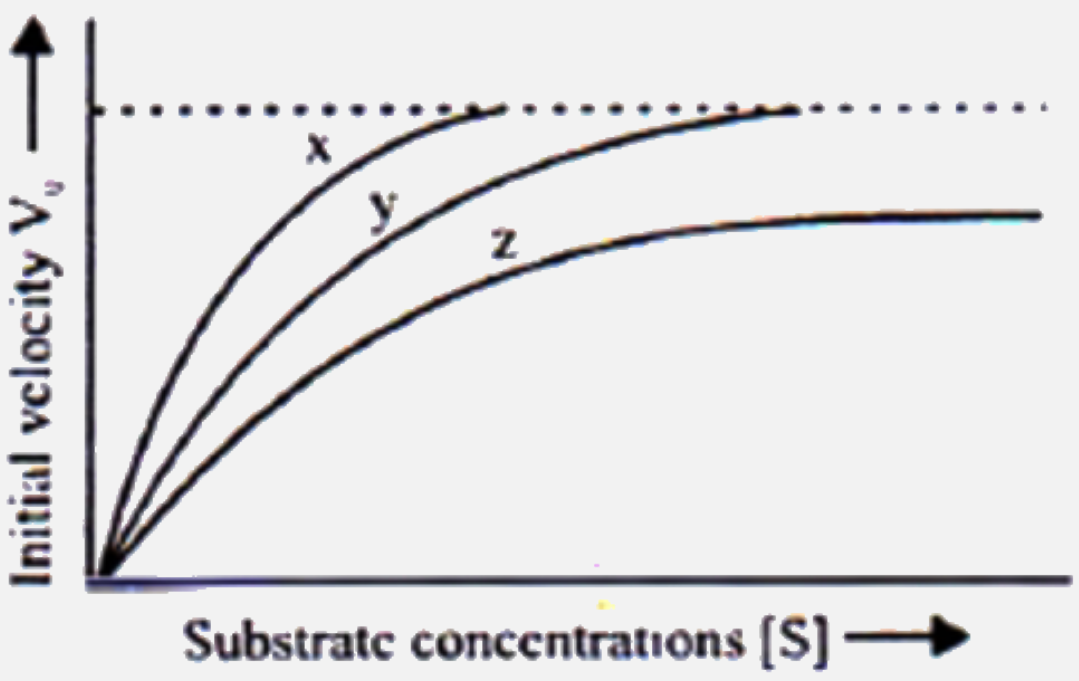Assertion: With the increase in substrate concentration, the velocity of the enzymatic reactions rises at first. The reaction ultimately reaches a maximum velocity which is not exceeded by any further rise in concentration of the substrate.
Reason: The enzyme molecules are fewer than substrate molecules and after saturation of these molecules, there are no free enzymes to bind with the additional substrate molecules.
If both assertion and reason are true and the reason is the correct explanation of the assertion.
If both assertion and reason are true but reason is not the correct explanation of the assertion
If assertion is true but reason is false
If both assertion and reason are false.
The correct Answer is:A
With the increases substrate concentration, the velocity of the enzymatic reactions rises at first. The reaction ultimately reaches a maximum velocity which is not exceeded by any further rise in concentration of the substrate because the enzyme molecule is fewer than substrate molecules and after saturation of these molecules, there are no free enzymes to bind with the additional substrate molecules.
Similar Questions
Knowledge Check
Assertion : With the increase in substrate concentration, the velocity of the enzymatic reaction rise at first. The reaction ultimately reaches a maximum velocity which is not exceeded by any further rise in concentration of the substrate.
Reason : The enzyme molecules are fewer than substrate molecules and after saturation of thes molecules, there are no free enzymes to bind with the additional substrate molecules.AIf both assertion and reason are true and the reason is the correct explanation of the assertionBIf both assertion and reason are true and the reason is not the correct explanation of the assertionCIf assertion is true but reason is falseDIf both assertion and reason are falseMichaelis constant (Km) value of enzyme is substrate concentration at which velocity of reaction is
AvmaxBOne third vmaxCHalf vmaxDOne fifth vmaxThe given figure shows three velocity-substrate concentration curves for an enzyme reaction. What do the curves x, y and z depict respectively?
 Ax-normal enzyme reaction, y-competitive inhibition, z-non-competitive inhibitionBx-enzyme with an allosteric modulator added, y-normal enzyme activity, 2-competitive inhibitionCX-enzyme with an allosteric stimulator, y-competitive inhibition added z-normal enzyme reactionDx-normal enzyme reaction, y-non-competitive inhibitor added z-allosteric inhibitor added
Ax-normal enzyme reaction, y-competitive inhibition, z-non-competitive inhibitionBx-enzyme with an allosteric modulator added, y-normal enzyme activity, 2-competitive inhibitionCX-enzyme with an allosteric stimulator, y-competitive inhibition added z-normal enzyme reactionDx-normal enzyme reaction, y-non-competitive inhibitor added z-allosteric inhibitor added
The substrate concentration at which the chemical reaction catalyzed by an enzyme attains half of its maximum velocity is termed as
View Solution[A] : A few molecules of enzymes provide large area to a large number of substrate molecules .
[R] : Size of enzymes is far larger than the substrate molecules .
View SolutionThe Given figure shows three velocity-substrate concentration curves of an enzyme reaction. What do the curves X Y and Z depict respectively ?

View SolutionThe Given figure shows three velocity-substrate concentration curves of an enzyme reaction. What do the curves X Y and Z depict respectively ?

View SolutionAssertion (A) In presence of enzyme, substrate molecule can be attacked by the reagent effectively.
Reason (R) Active sites of enzymes hold the substrate molecule in a suitable position.
View Solution
